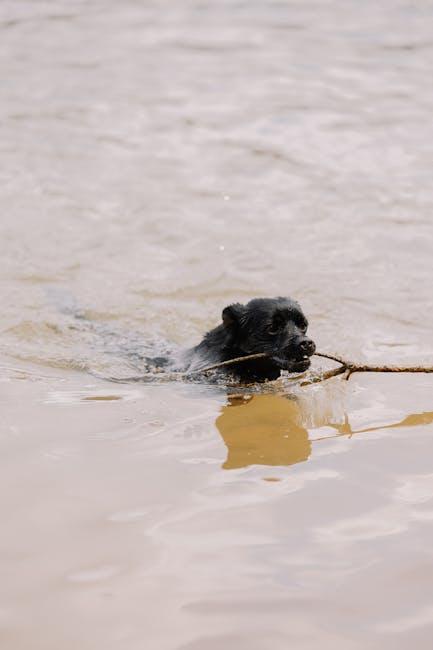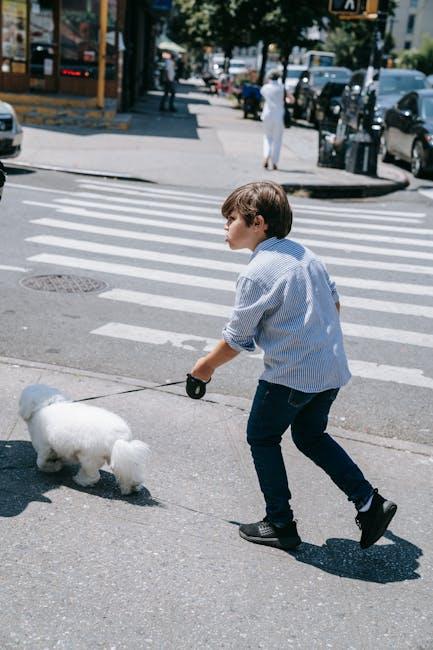In our fast-paced world, it’s easy to overlook the simple joys that come with caring for our furry companions. Yet, as any dog owner will tell you, the bond shared with a pet is both rewarding and enriching. One of the most vital components of maintaining this bond, and ensuring your dog’s overall well-being, is regular exercise. Just like humans, dogs require consistent physical activity to lead healthy, happy lives. In this article, we will explore the myriad benefits of regular exercise for your dog, offering insights into how it can enhance their physical health, mental stimulation, and emotional happiness. Whether you have a playful puppy or a more reserved senior dog, incorporating regular exercise into their routine can significantly improve their quality of life and strengthen the special connection you share. So, let’s delve into the world of wagging tails and joyful barks, and discover how exercise can transform your dog’s life.
Understanding Your Dogs Exercise Needs
Every dog, regardless of breed, size, or age, benefits from a well-tailored exercise routine. The right amount of physical activity not only helps maintain a healthy weight but also supports mental well-being and strengthens the bond between you and your furry friend. However, understanding the specific exercise needs of your dog can be challenging, as it depends on various factors such as breed, age, and health condition.
Key factors to consider when determining your dog’s exercise needs include:
- Breed: High-energy breeds like Border Collies and Labradors require more intense activities, while breeds like Bulldogs may prefer shorter, gentler sessions.
- Age: Puppies and young dogs have bursts of energy and need frequent playtime, whereas older dogs may benefit from slower-paced walks.
- Health: Always consult your veterinarian if your dog has health issues or you are unsure about the intensity of exercise they can handle.
Incorporating a mix of activities such as walks, play sessions, and mental challenges can keep your dog happy and healthy. Remember, consistency is key, and adapting the routine to suit your dog’s changing needs over time ensures they live a fulfilled and vibrant life.

Crafting a Tailored Exercise Plan for Your Furry Friend
Designing a personalized exercise plan for your dog can make a world of difference in their overall health and happiness. Just like humans, dogs have unique needs based on their breed, age, and health conditions. Here are some key considerations to help you tailor the perfect routine:
- Breed-Specific Needs: Different breeds have different energy levels. For instance, a Border Collie thrives on high-intensity activities, while a Bulldog might prefer a leisurely stroll.
- Age Considerations: Puppies require short bursts of play, while senior dogs may benefit from gentler, low-impact exercises.
- Health Conditions: Always consult your vet if your dog has specific health issues, as they can recommend suitable exercises that won’t exacerbate any conditions.
- Variety is Key: Incorporate a mix of walks, play sessions, and mental stimulation to keep your furry friend engaged and happy.
By focusing on these aspects, you’ll ensure your dog not only stays fit but also enjoys every moment spent in activity, strengthening your bond and enhancing their quality of life.

Fun and Engaging Activities to Keep Your Dog Active
Keeping your furry friend engaged and active doesn’t have to be a chore. There are countless ways to make exercise fun and stimulating for both you and your dog. Interactive games like fetch or tug-of-war not only burn energy but also strengthen the bond between you and your pet. If you’re looking for a challenge, try setting up a simple agility course in your backyard using items like cones, hoops, and tunnels. This will help enhance your dog’s coordination and mental acuity.
- Hide and Seek: Encourage your dog to use their natural hunting instincts by hiding treats or toys around the house or yard.
- Doggy Playdates: Socialize your pup with other dogs. A trip to the local dog park can offer plenty of exercise and interaction.
- Swimming: If your dog enjoys water, swimming is a fantastic low-impact exercise that’s easy on the joints.
- Obstacle Courses: Use household items to create a fun and challenging obstacle course for your dog to navigate.
Remember, the key is to tailor activities to suit your dog’s age, breed, and fitness level. Consistency is vital, so aim for at least 30 minutes to an hour of physical activity daily. By incorporating these activities into your routine, you’ll ensure your dog remains healthy, happy, and well-adjusted.

Ensuring Safety and Well-being During Exercise Sessions
When it comes to exercising your furry friend, their safety and well-being should always be a top priority. Start by choosing the right environment for your dog’s activity, ensuring it is both safe and stimulating. Avoid areas with sharp objects or those prone to extreme temperatures. Always carry water to keep your dog hydrated, especially during longer sessions or in warm weather.
- Monitor your dog’s behavior closely for any signs of discomfort or fatigue.
- Adjust the intensity and duration of the exercise based on your dog’s age, breed, and health condition.
- Consider the use of reflective gear if you’re exercising during early mornings or late evenings.
- Use a leash to maintain control, especially in unfamiliar areas.
Lastly, always end exercise sessions with a cool-down period, allowing your dog to relax and recover. This not only helps prevent injuries but also promotes a sense of well-being and contentment. A well-planned exercise routine not only keeps your dog physically fit but also enhances their mental health, contributing to a happier, healthier life.

